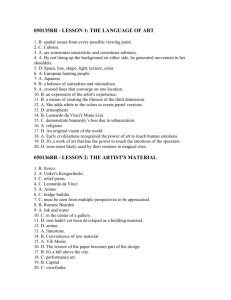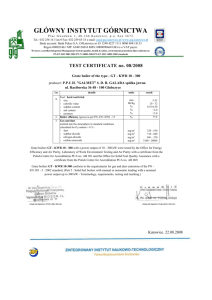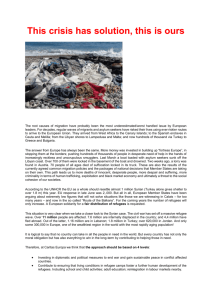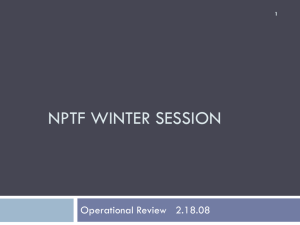“Project 2 – GitS: SAC & 2nd Gig”
advertisement
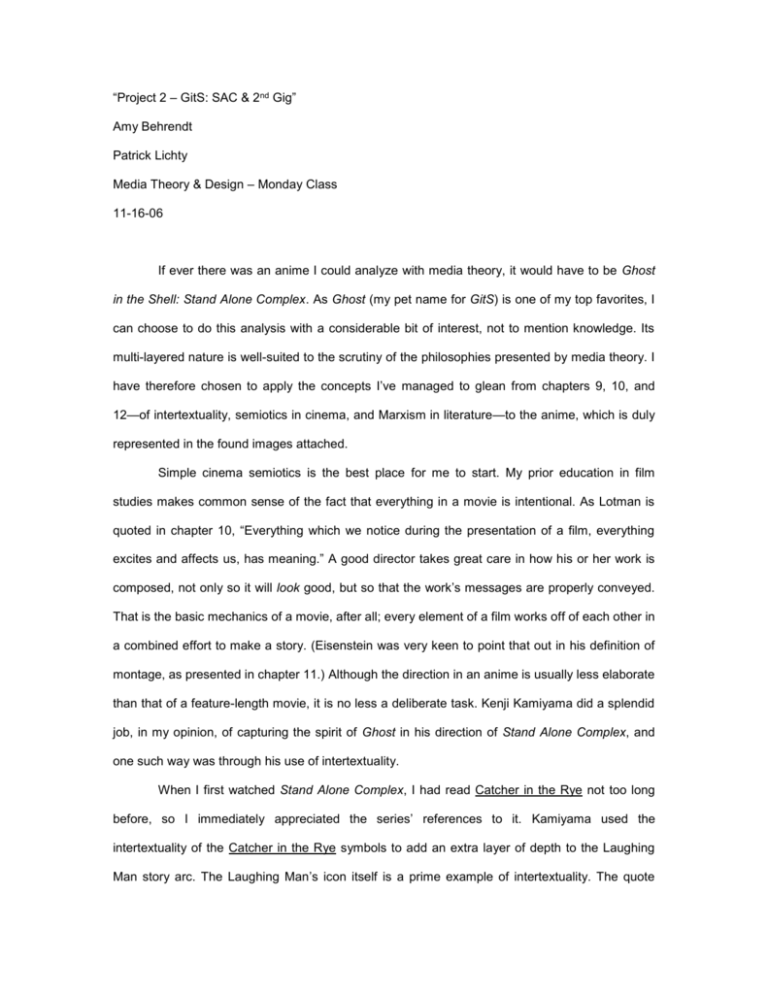
“Project 2 – GitS: SAC & 2nd Gig” Amy Behrendt Patrick Lichty Media Theory & Design – Monday Class 11-16-06 If ever there was an anime I could analyze with media theory, it would have to be Ghost in the Shell: Stand Alone Complex. As Ghost (my pet name for GitS) is one of my top favorites, I can choose to do this analysis with a considerable bit of interest, not to mention knowledge. Its multi-layered nature is well-suited to the scrutiny of the philosophies presented by media theory. I have therefore chosen to apply the concepts I’ve managed to glean from chapters 9, 10, and 12—of intertextuality, semiotics in cinema, and Marxism in literature—to the anime, which is duly represented in the found images attached. Simple cinema semiotics is the best place for me to start. My prior education in film studies makes common sense of the fact that everything in a movie is intentional. As Lotman is quoted in chapter 10, “Everything which we notice during the presentation of a film, everything excites and affects us, has meaning.” A good director takes great care in how his or her work is composed, not only so it will look good, but so that the work’s messages are properly conveyed. That is the basic mechanics of a movie, after all; every element of a film works off of each other in a combined effort to make a story. (Eisenstein was very keen to point that out in his definition of montage, as presented in chapter 11.) Although the direction in an anime is usually less elaborate than that of a feature-length movie, it is no less a deliberate task. Kenji Kamiyama did a splendid job, in my opinion, of capturing the spirit of Ghost in his direction of Stand Alone Complex, and one such way was through his use of intertextuality. When I first watched Stand Alone Complex, I had read Catcher in the Rye not too long before, so I immediately appreciated the series’ references to it. Kamiyama used the intertextuality of the Catcher in the Rye symbols to add an extra layer of depth to the Laughing Man story arc. The Laughing Man’s icon itself is a prime example of intertextuality. The quote pulled from the book, “I thought what I’d do was, I’d pretend I was one of those deaf-mutes” is used to the anime’s advantage by representing Aoi’s (the Laughing Man) struggle in fighting the nanomachine corporations. The icon’s face has a hat, which I believe is flipped backwards, and therefore is alluding to Holden’s red hunting cap, and that in turn represents his younger brother Allie, who is a symbol of innocence. (Phew!) Aoi is fighting the good fight for the sake of the innocent people affected by cyberbrain sclerosis, so that they may receive a cure for their disease. Other symbols, such as the lefty catcher’s mitt in episode 11 and the red hat the Major puts on in episode 26 (which has the word “Aoi” on it, and that happens to be a Japanese word for “innocent”), are utilized to slip in extra meaning by bringing it in from an outside source— Catcher in the Rye. These multi-layered examples of intertextuality of semiotics just go to show the lengths Kamiyama went to bring out the fullest meaning he could in Stand Alone Complex. Now, as lovely as intertextuality and semiotics are, they are fairly easy for me to grasp when compared to the issue of Marxism. If it weren’t for 2nd Gig, I would probably not touch it with a ten-foot poll. Luckily for me, the second season of Stand Alone Complex is centered on the struggles of the Asian refugees in Japan, and the character Hideo Kuze, which are, for the most part, all about class conflict. Additionally, 2nd Gig brings the issue of class conflict into a futuristic setting, which is interesting and exciting, and makes it very concrete. What I mean by that is I do not need to apply the theory of Marxism to the show just for the sake of applying it, because the show already makes it clear that it is dealing with the topic of class struggle. I personally dislike talking about Marxism as though it were a valid theme to apply to everything, especially since I do not believe that our American society, for one, is really divided into a true and fixed class structure (at the very least, not by Marxism’s original 19th century standards). However, that is only my opinion, of course, and does not mean I cannot utilize what I have learned about Marxism. In the case of 2nd Gig, it is clearly an object of great focus, what with the refugee situation and Kuze’s revolution. That is too easy to conclude, though, and would be the same as saying that Oliver Twist is about class struggle. I would not feel content to stop at the obvious conclusion that 2nd Gig uses Marxism as only a plot element. Rather, I believe that it is used as a symbol for something else beyond that. I am not, nor do I claim to be, a world-class expert on the Japanese society, but my understanding is enough to be able to see that there is more to the topic of class struggle in 2nd Gig. Although the show takes place some thirty years in the future, it contains messages relevant to contemporary Japan. It is, and has been, by its nature, a secluded country adverse to outsiders, even its fellow Asian nations. In modern times, Japan seems to have grown more accustomed to the Western world, although, as it was stressed in class on Anime Day, it is still a very separate entity in itself. As it is in 2nd Gig, Japan has dealt with two world wars in a short period of time, and due to the aftermath, has taken on refugees that fled from other areas in Asia. Now that some time has passed since the war conflicts ended, the problem of the refugees grows hotter and hotter each day. Naturally, Japan does not want to allow the refugees integrate into their society. Even in a future where technology is so advanced that people’s minds can be connected via the Internet, Japan is still as xenophobic as it has ever been. I do not believe that message was accidental. It is a message that is speaking to modern-day Japan about one of its biggest social impediments. I would imagine that is an incredibly hefty thing to claim, and I acknowledge that fact. I am aware that my expertise about the Japanese culture is lacking, but I will take confidence in my argument, nonetheless. The anime is so exquisitely crafted that I can rely on it for containing what I have asserted about Japanese society. Kamiyama could have chosen to portray the refugees as terrorist parasites and Kuze as a maniacal revolutionary, and nothing more. If that were the case, the Japan in 2nd Gig would have been justified in its great disdain of the refugees. Yet much was done to convey the distraught of the refugees, and Kuze’s character was delved into deeply. In short, Kamiyama had the viewer “get to know” the Asian refugees and Hideo Kuze. When that was done, they were no longer the real villains of the show. In fact, the true antagonist turned out to be a Japanese citizen—Gohda! That is what the show portrayed, and that is how I came to my conclusion about how the theme of class conflict was used to convey a deeper message. As an American, I realize that I am always going to be an outsider to the true value of Japanese animation. Be that as it may, 2nd Gig had an undeniable message I could not help but pick up on, regardless of my nationality. While it may be hard for me to understand at times, media theory is becoming to be a tool I can use to interpret certain things in ways that compliment and occasionally clarify my intuitive understanding of them. One such thing has been Ghost in the Shell: Stand Alone Complex. It is an anime that I enjoy greatly and consider one of my top favorites, but when it comes to fully understanding it, I still have a long way to go. Media theory has helped me to figure out some of its mysteries, while Ghost has, at the same time, helped me to better grasp media theory. It is that kind of interconnection that I hope to continue discovering as time goes on.

